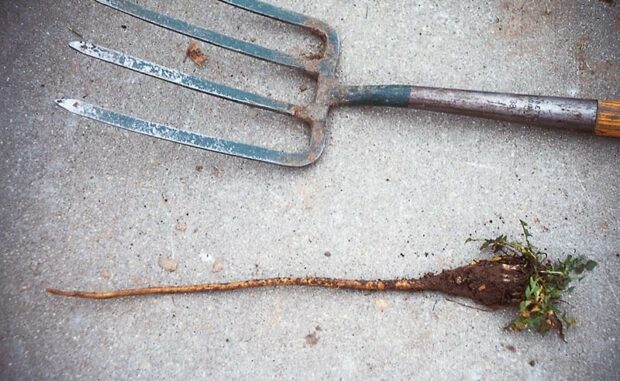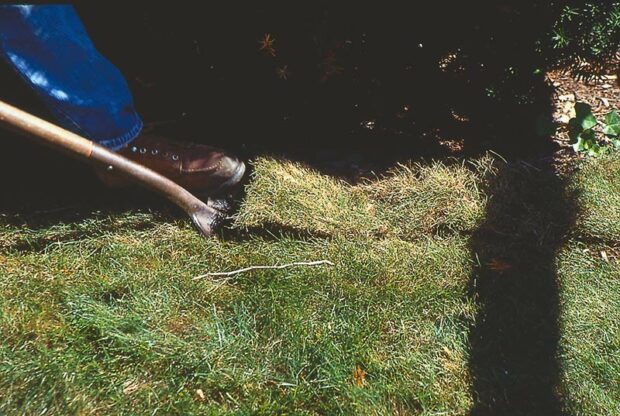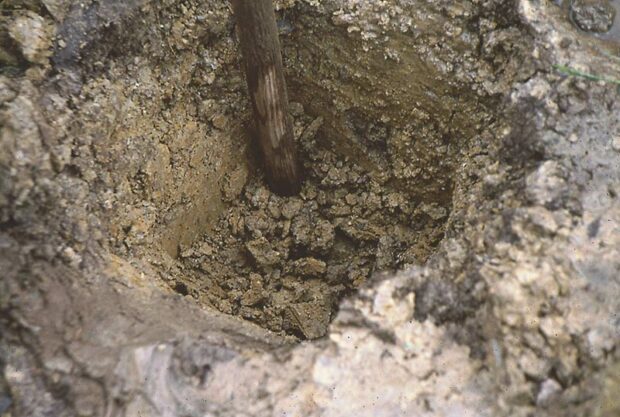Good soil preparation in the spring means great plants for years to come
by Steven Nikkila








Article and photos by Steven Nikkila, www.gardenatoz.com.
Elsewhere: Managing your summer compost
PLEASE NOTE: In the autumn of 1995, we hatched the idea for a free, local gardening publication. The following spring, we published the first issue of Michigan Gardener magazine. Advertisers, readers, and distribution sites embraced our vision. Thus began an exciting journey of helping our local gardening community grow and prosper.
After 27 years, nearly 200 issues published, and millions of copies printed, we have decided it is time to end the publication of our Print Magazine and E-Newsletter.
by Steven Nikkila








Article and photos by Steven Nikkila, www.gardenatoz.com.
Elsewhere: Managing your summer compost
I have an antique iron urn that is sitting outside and has begun to rust. Is there any danger to plants if I use it for a container/planter? Does it matter if I use annuals or perennials? I am also considering planting a yucca in it; how do you think it would do?
Your container will work well with no adverse reactions to rust by your plants. However you must drill several large holes in the bottom of the container to allow for drainage. To stop the soil from plugging the holes and restricting drainage, put a piece of screen or weed cloth over the holes. You may have a problem with the existing rust on the bottom—if you place your container on concrete or wood, the rust and water that drains out may stain the surface below. Annuals are always a good choice for planters; they do well in the summer and are not a concern when it comes time to put things away for the winter. Perennials (or the yucca) will require protection from the winter elements (such as putting the container in the garage). The same would be true for an evergreen or shrub. Perennials will also require repotting and division due to the restricted environment in the metal urn.
The heady fragrance of traditional Easter lilies (Lilium longiflorum) or Madonna lily (Lilium candidum) is never forgotten once experienced. Both are true members of the lily family. They grow about 1-1/2 to 3-1/2 feet tall in full sun in rich, evenly moist but well-drained soil. Because you are asking about planting outside in zones 5 and 6, you’ve probably heard numerous stories of how people have a whole garden full of “Easter lilies” that they’ve planted every year and successfully had them grow and bloom repeatedly.
That being said, a few words of caution and qualification go with those success stories. The lily hybrids of Lilium longiflorum are not usually considered a garden plant, being normally hardy to only zones 7 to 9. Consequently they are grown primarily in pots here, and nurseries force them in bloom so their buds burst forth in time for the Easter celebration. Remember this observance moves on the calendar annually, from as early as mid-March to as late as mid-April. The bulb is not mysteriously intelligent; it has just been manipulated by greenhouses to bloom at the desired time.
That being said, there is a cultivar called ‘Mount Everest’ that bears fragrant white trumpets and can be grown in the ground in zones 5 to 8. If you were fortunate enough to receive or purchase a lily with an identification tag, you may know if you have that plant or another named cultivar. Or, if you in fact have a Madonna lily, it will tolerate temperatures down to 25 degrees. Unfortunately most Easter lilies rarely get tagged because they are either forced in a greenhouse or shipped in from warmer regions and are not hardy to our zones that deal with frozen soil in winter.
However, if you would like to attempt to save it in the ground, choose a sheltered, sunny spot that is well-drained. Many times we have microclimates around our homes, especially near the house foundation, that mimic a zone or two warmer than our overall region. If that warm, dry place is close to an often-used walkway, all the better to enjoy the fragrance.
Plant the bulb about 6 to 8 inches down, as you would any of the hardy summer-blooming Asiatic or Oriental lilies. Add about a tablespoon of granular bulb fertilizer to the planting hole. Evenly moist but well-drained soil at the site, especially in winter, cannot be stressed enough. You can leave the foliage intact to help feed the bulb naturally until the leaves completely brown out. Apply a heavy blanket of shredded leaf mulch to the planting area to minimize winter temperature fluctuations.
If there isn’t a place in your yard that suits these special conditions, try letting the foliage die back with the bulb in the pot. Let the soil dry out, and then lift the bulb, checking for soft spots. Make sure it is dry and soil-free. Store the bulb wrapped in a paper bag in a cool dry place until the following February. You are mimicking the winter dormancy of its native habitat. Then you can pot it up with a well-draining soil mixture, keeping the soil moist but not soggy. Put it in a warm, sunny window away from drying heat vents and watch the bulb come to life.
Volunteers helped replant 120 flowering cherry trees around Belle Isle’s Scott Memorial Fountain in mid-November. Overseen by the Department of Natural Resources, the project was organized by The Greening of Detroit, a nonprofit organization established to guide and inspire the reforestation of the city.
“We are very excited to contribute to the ongoing beautification of Belle Isle park with the cherry tree planting,” said Rebecca Salminen Witt, president of The Greening of Detroit. “We have planted hundreds of trees there in recognition of the important role it plays in enhancing the quality of life in our city.”
In 1994, Toyota (Detroit’s sister city from Japan) donated flowering cherry trees to the city. Many were planted on Belle Isle near Sunset Point and around the Scott Memorial Fountain. Due to disease and damage from insects, many of these trees have since died or had to be removed because of poor condition. “The tree replantings of a disease-resistant species will serve to further beautify Belle Isle by filling these gaps,” said Kevin Sayers, coordinator of the DNR’s Urban Forestry program.
“This planting was the first phase in a multiphase project to replant trees in maintained (and other high-use) areas of the park.” Sayers also noted that the multiphase plan may be implemented over several years, with the next phase starting next spring. The cherry tree replanting project was funded as part of a $150,000 U.S. Forest Service grant. This grant is also funding hazard-tree removal and creation of a tree inventory and management plan for Belle Isle.
Since December 2013, the DNR has worked to rid the island of hazard trees in heavily used areas that posed a risk to public safety. DNR staff first inspected the trees. The majority of trees marked and felled showed obvious signs of hazard conditions. More than 200 hazard trees were felled, with additional trees lost during summer and early fall storms.
“(This cherry tree project) was a great start to replanting some of the trees lost on the island to storms, disease and human activity, and those just coming to the end of their natural life cycle,” Sayers said. “We had a successful volunteer turnout and fantastic cooperation between multiple agencies, and I look forward to continuing this momentum into the spring.”
Copyright 1996-2025 Michigan Gardener. All rights reserved.